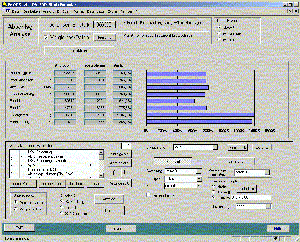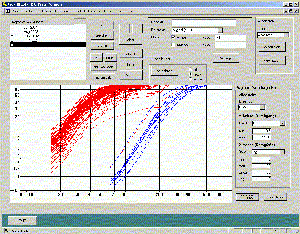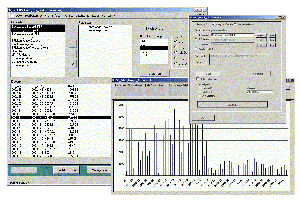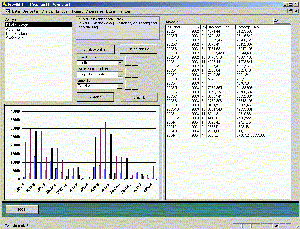















| Druck |
|
Analysis While reporting runs on a standardized basis to assist routine work, data analysis is generally an intellectual, interactive and recursive process. From point of view of the software this requires as much flexibility as possible. Flexibility refers in this respect to what data are involved, how they are selected and how they are presented (typically sub-totaling, etc.). The demand for utmost flexibility contradicts with the wish for simple handling. Although this contradiction can not resolved completely, ProMIS has found a reasonable approach to satisfy all needs by introducing several levels of expertice and complexity of analysis. |
||
|
Standard Analyse As indicated by the name, standard-analysis is intended for the everyday use. The selection criteria include relatively simple items referring to time or geometry and hence are very easy to define. Typically the analysis incorporates a comparison-dataset (e.g. conparison of production of this month with tat of te previous one, or comparison of blast of bench x to those of bench y). |
||
|
Task-specific analysis For a series of task-specific data special analysis methods are provided. Focusing on a specific topic allows to provide methods exactly designed for this purpose, which makes the method powerful and yet manageable. However there are limited possibilities to cross-reference the data or results with other data. In the example to the right the analysis of framentation data is shown. Distinct measurements can be selected, grouped and displayed. Furthermore curves can be totaled or keyfigures such as passing values can be calculated. |
|
|
|
Expert analysis This is the most general and universal form of the analysis. Any data existing in the system can be addressed and processed (provided that there is any logical link between them). The data can be sub-totaled to a higher level so that for almost all data a common comparison basis can be found and hence related to each other. There are many options to control how the data are processed. Also in respect of data selection (querying) utmost flexibility is provided by means of a selection-criteria-editor, which is capable to represent complex phrases including logical commands and grouping by parenthesis. This is not infrequently necessary to exclude some outlier data from analysis. |
||
|
User-defined analysis Although the complexity of the expert-analysis might be frighting at first glimps, the great thing is that - once defined - it can be saved and in this way made available for "normal" users. So the management can provide tailor-suited checking-, validation, and analysis mechanisms for the staff. No need to say that the mine-it team provides support to assist in this task. |
||



